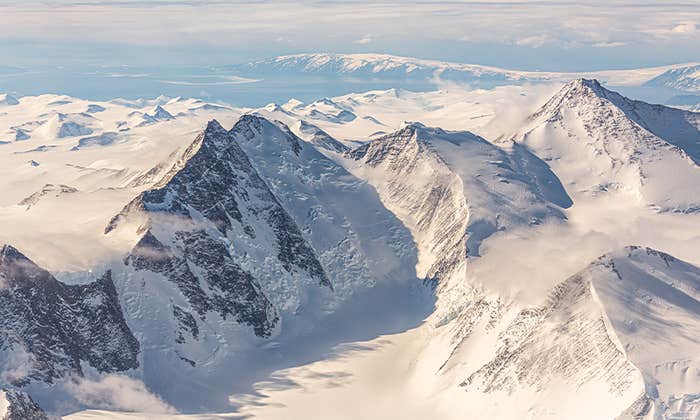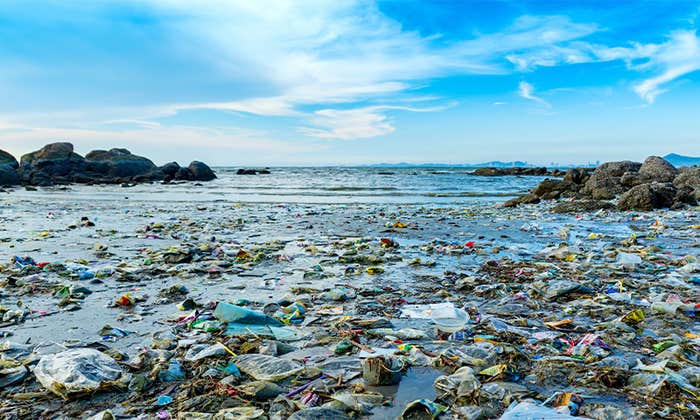When we arrived, the shore was cloaked in a slow-moving shroud of mist and fog. The only way to know we had, in fact, reached our destination, was to trust what the captain announced over the intercom. Visibility ended a few yards from the bow of the ship. And yet, there I was, in Antarctica.
On a good day, the sun is dazzling, reflecting miles and miles of brilliant, unblemished snow back into a startlingly blue sky that looks like it belongs to a pleasant summer day in Maine. You can’t look around without eye protection because there is no less-glaring, gently colored place to rest your eyes, and the sheer expanse of the place is staggering.
On a bad day, the landscape is shrunken to the few feet you can still see, and your focus is drawn from the vastness right back into your own body. Ice pellets stab into any exposed skin with brutal regularity, the wind burns your eyes, and snowflakes crust your eyelashes. There’s no more space for contemplation; you need to get your gloves back on, or better yet, get inside. And a good day can become a bad day in a matter of hours. It’s too changeable. Too violent, beautiful, harsh. This is no place for humans.
And yet, the humans are here.
And, arguably, the humans need to be here. It’s undeniable that our planet’s climate is changing, and that what’s happening here will impact the entire globe. Yet we need to know so much more about the day-to-day on this isolated continent.
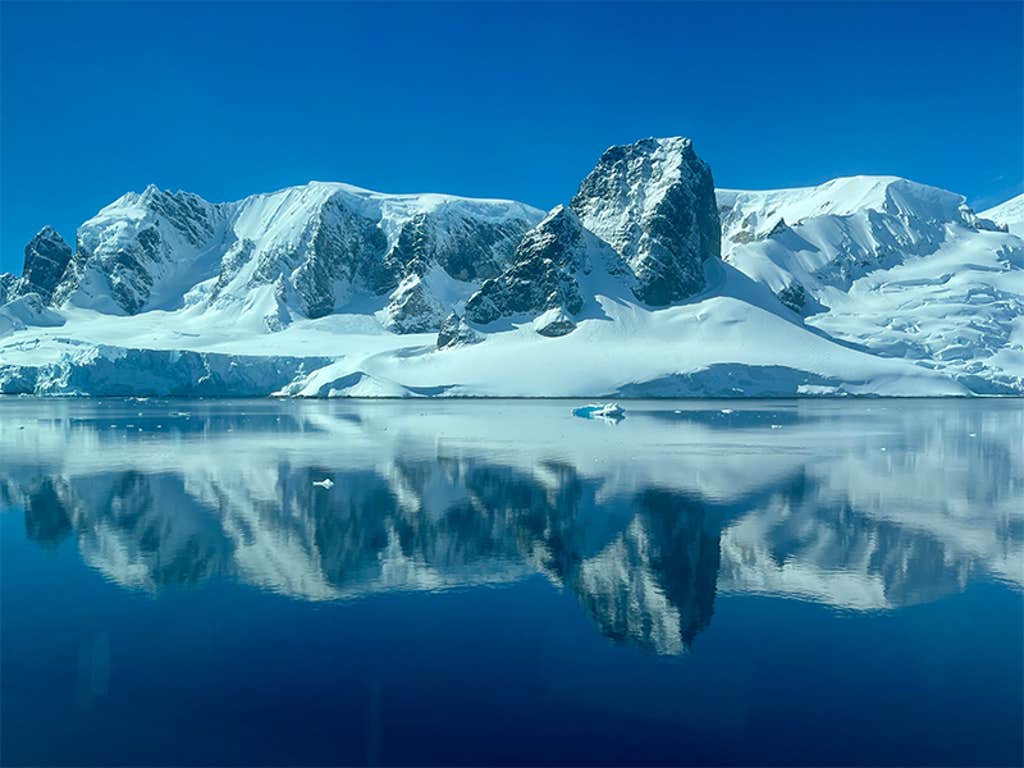
We all know the glaciers are melting, causing sea level rise, coastal erosion, and disturbing the balance of salt and freshwater in the surrounding oceans. The melting glaciers could also increase the rate of warming. Intact glaciers reflect some of the sun’s heat back away from the planet’s surface—if the glaciers are gone, the earth will have no choice but to absorb that extra heat, accelerating the rate of warming.
On top of that, the Southern Ocean, also known as the Antarctic Ocean, is vital to regulating global CO2 levels. This area is where the deep water of the oceans rises to the surface, where it mingles with the air, changes, and reforms, sinking back into the depths. This moment of air-sea exchange of CO2 has a huge impact on the overall amount of CO2 the ocean keeps safely sequestered in its depths.
Our warming world is upsetting the balances in the Southern Ocean. In Antarctica, I got a glimpse of its changing ecosystem, and an opportunity to reflect on what that means for us all.
I journeyed to Antarctica on the Viking Polaris—a cruise ship, but a cruise ship with science. The science crew onboard measured changes in the water, looked for plankton, released weather balloons, and monitored the presence of microplastics.
One morning, on a cold, blustery day, I found myself leaning precariously over the side of a small zodiac boat, lowering a black and white circle called a Secchi disk into the water to measure the turbidity. Funnily, the tool used today to estimate the depth at which visibility ends is the same one that has been used for centuries.
On a bad day, the landscape is shrunken to the few feet you can still see.
I was there, along with marine biologist Meghan Goggins, the chief scientist onboard, one of her junior scientists, and a few other journalists, to collect a sample of the phytoplankton in the water.
You attach a small plastic jug (because glass is too likely to shatter on the ship) to the end of a long net, and drive around the bay for about 10 minutes. Then you pull up your jar of muck, pour it through a filter (that’s the part I was tasked with), and voila—you have a phytoplankton sample. At that point, you make what looks like a tiny joint, paper-filter rolled lovingly around the precious muck, and slide it carefully into a glass vial, labeled with date and time, all ready to be sent off to the Scripps Institute of Oceanography for further study.
But why were we motoring around a pristine waterscape looking for pond scum? Because while phytoplankton seem tiny and insignificant, they bear the weight of the whole ecosystem on their tiny slimy backs. “The phytoplankton is mainly being affected due to retreating glaciers,” explained Goggins. “The fresh water melting into the marine environment creates a lot of stress for the phytoplankton.” And why do we care about phytoplankton? Enter the krill.
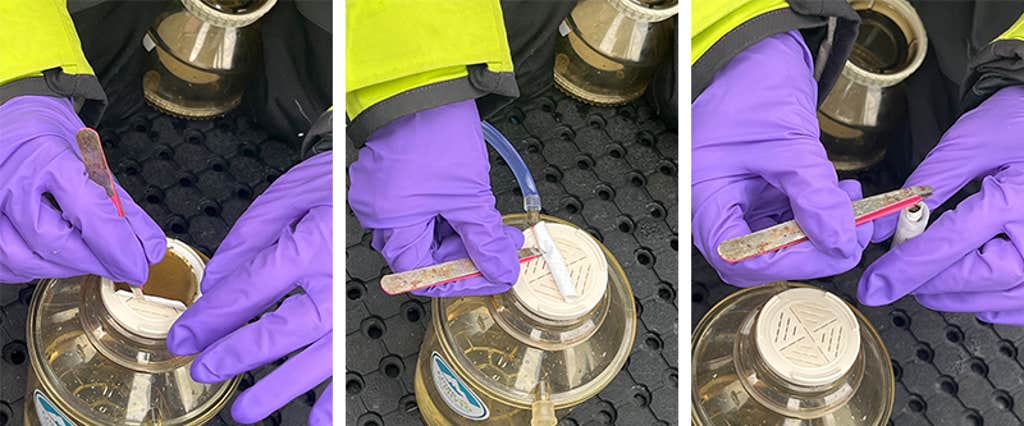
“Krill is the engineer of the Antarctic ecosystem,” Goggins said. “So, if you take out krill, you don’t have any other animal because everything eats krill or eats something that eats krill.” Without krill, the food web would collapse. And what do krill eat? You guessed it—phytoplankton.
Antarctic krill (Euphausia superba) is very hard to monitor on its own, for a number of reasons, but mainly because “it swarms, and you have these boom and bust events,” Goggins said. Prior to joining the team on Polaris, Goggins spent several years with the British Antarctic Survey, monitoring krill populations. She explained that krill is mainly studied through proxies, like fur seal or penguin populations. “We know that’s their favorite food. So if they’re healthy, we know that the krill’s healthy.”
As for the phytoplankton, more data are needed, but researchers have already seen a decrease in some varieties of plankton, and noticed other types are doing well with the meltwater. What we don’t know is how the krill will respond to their changing diet—not all phytoplankton are equally tasty, after all.
“These species and organisms have developed and evolved over millions of years to deal with certain physical parameters of the water,” Goggins said. “Because these rates of change are happening so quickly now with increasing sea surface temperature, depletion of oxygen, some aren’t resilient, and they can’t deal with those stresses. It’s changing that whole community structure, which then obviously has additional influences and impacts up the food chain.”
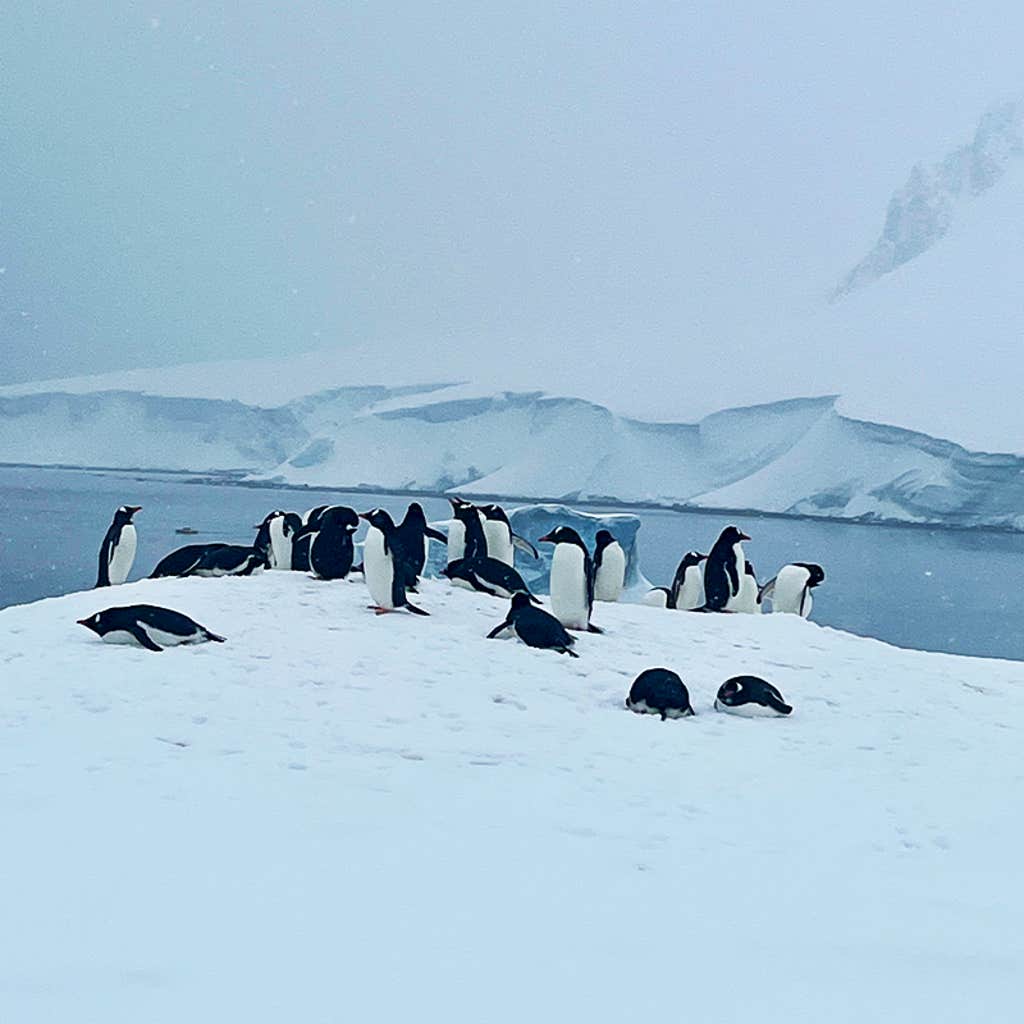
The water in Antarctica was unlike any water I’d ever encountered. Of course there were ice sheets, and icebergs, but there were also just smaller chunks of ice everywhere. Whole fields of ice chunks, floating in the reflection of ice mountains. Some were roundly jagged, like little rocks that just happen to be made of water, and some were flat and perfectly smooth, like the pieces of a plate someone clumsy has dropped on a tile floor.
But, in one alarming aspect, the water here was just like the water anywhere else. Microplastics are present even here, where there are no factories, no urban centers, and no human settlements other than a few research stations.
Every other week, the science team on the ship sampled the water for microplastics. They pulled about 10,000 liters of water on board and ran smaller samples of that water through filters of varying sizes. “It’s very depressing. We find microplastics in every single sample that we take,” Goggins said.
There’s a need to step back and remember that the Earth itself is one huge ecosystem.
One evening, every single one of the beakers that make up the 10,000 liters contained multiple examples of microplastics. “For the ocean, that’s obviously not a lot of water,” Goggins said. “That shows the abundance and distribution that’s here. Why it’s such a pervasive issue.”
These microplastic samples will be sent to the Norwegian Institute of Water Research, where other researchers will identify exactly what kind of plastic these microscopic bits and pieces are. This data can help identify where the plastic is coming from, and how it’s getting into the water in the first place.
“I think there’s a need to step back and remember that the Earth itself is one huge ecosystem,” Goggins said.
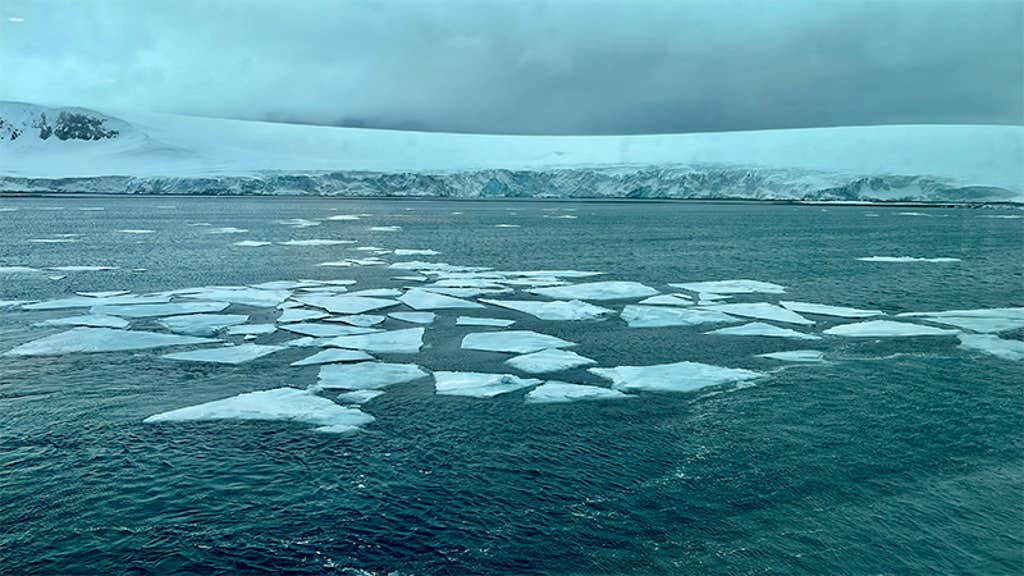
One morning, I was kayaking in the bay around D’Hainaut Island. It was there the true vastness of Antarctica really hit me. As I wrestled my paddle through the current, feeling the pull and the chop, I was struck by how small, how insignificant I was in this massive desert of ice mountains. I found a quieter spot in the bay to rest in and gazed up at the frozen landscape.
Antarctica can seem like a film set at times. You feel that maybe there’s just this one row of towering mountains of snow and ice, that just beyond them must be something gentler, something with some trees perhaps. But floating in the bay underneath these behemoths it struck me—this landscape just goes on, and on. There are thousands and thousands of miles of this harsh, unyielding ice desert. The magnitude of trying to understand such a place is baffling. It might not seem like much, to collect water, and plankton, and plastics. A drop in the ice bucket, as it were. But it is only through these drips and drops of data that we’ll ever learn the nature of this mysterious place. Our very planet may depend on that understanding, and on what we do with our knowledge. ![]()
Photos by the author.
The author’s trip to Antarctica was funded by Viking.




























